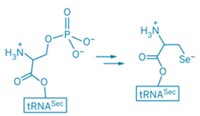Advertisement
Grab your lab coat. Let's get started
Welcome!
Welcome!
Create an account below to get 6 C&EN articles per month, receive newsletters and more - all free.
It seems this is your first time logging in online. Please enter the following information to continue.
As an ACS member you automatically get access to this site. All we need is few more details to create your reading experience.
Not you? Sign in with a different account.
Not you? Sign in with a different account.
ERROR 1
ERROR 1
ERROR 2
ERROR 2
ERROR 2
ERROR 2
ERROR 2
Password and Confirm password must match.
If you have an ACS member number, please enter it here so we can link this account to your membership. (optional)
ERROR 2
ACS values your privacy. By submitting your information, you are gaining access to C&EN and subscribing to our weekly newsletter. We use the information you provide to make your reading experience better, and we will never sell your data to third party members.
Biological Chemistry
Pulling apart DNA
July 30, 2007
| A version of this story appeared in
Volume 85, Issue 31

After taking a closer look under the hood of an enzyme motor that unwinds double-stranded DNA, researchers have reported a new "spring-loaded" mechanism for its unraveling action (Science, DOI: 10.1126/science.1144130). Helicase enzymes normally pull apart DNA to allow genome-duplicating and protein-making machinery to access the genome. On the basis of fluorescence resonance energy transfer experiments, Sua Myong and Taekjip Ha of the University of Illinois, Urbana-Champaign, and collaborators propose that the motor moves along the DNA one base pair at a time, each step catalyzed by one ATP molecule. During the course of three sequential base-pair steps, mechanical tension builds up within the enzyme that is then used to separate the DNA that has just been traversed. The concurrent unwinding of three base pairs conveniently corresponds to the length of an amino acid codon, Ha notes. The researchers made the discovery while studying the helicase motor of hepatitis C, but Ha says the mechanism may be more universal.




Join the conversation
Contact the reporter
Submit a Letter to the Editor for publication
Engage with us on Twitter